Radar maps can look like optical images, but they represent the amount of energy reflected back toward the transmitter by any given part of the Moon’s surface. The Arecibo Telescope’s radar wavelength of 70 cm penetrates 10 meters or more into the very dry lunar surface. When it bounced back to the Green Bank Telescope, (GBT), it reveals variations in the abundance of rocks larger than about 10 cm in diameter and differences in the chemistry of rocks that form the Moon’s crust.
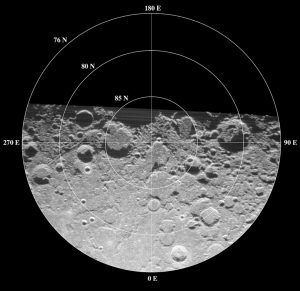
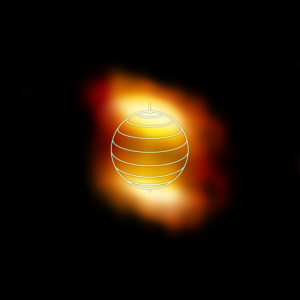
HC3N in Titan’s Lower Atmosphere
ALMA image of the distribution of the organic molecule HC3N at intermediate-to-lower elevations in the atmosphere of Saturn’s moon Titan. The denser, brighter concentrations are oriented more evenly about the poles than is observed for HC3N at higher elevations. The globe outline represents Titan’s orientation at the time of the observations.
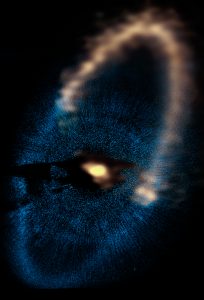
Fomalhaut Disk
The narrow dust ring around the bright star Fomalhaut. Peach at top is the ALMA image, and the blue at bottom is Hubble Space Telescope image. The star is at the location of the bright gold emission at the center of the ring.
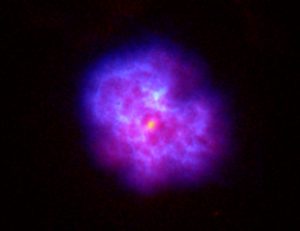
Pulsar Wind Nebula
This beautiful cloud of gas exploded outward when the star in its center went supernova and turned into a pulsar. The sliced-apple appearance of the expanding cloud is caused by the pulsar pushing the gas outward in bulges.
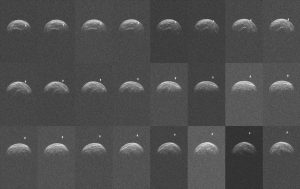
Radar Image Collage of Asteroid 2004 BL86
Collage of radar images of asteroid 2004 BL86 made by the Green Bank Telescope from radar transmitted from NASA’s Goldstone Deep Space Network antenna.
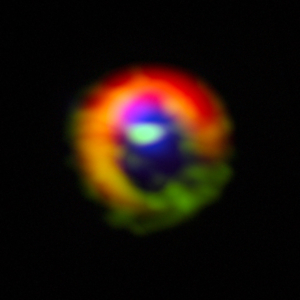
ALMA Sees Baby Solar System
Observations made with the Atacama Large Millimeter/submillimeter Array (ALMA) telescope of the disc of gas and cosmic dust around the young star HD 142527, showing vast streams of gas flowing across the gap in the disc. These are the first direct observations of these streams, which are expected to be created by giant planets guzzling gas as they grow, and which are a key stage in the birth of giant planets. The dust in the outer disc is shown in red. Dense gas in the streams flowing across the gap, as well as in the outer disc, is shown in green. Diffuse gas in the central gap is shown in blue. The gas filaments can be seen at the three o’clock and ten o’clock positions, flowing from the outer disc towards the centre. The dense gas observed is HCO+, and the diffuse gas is CO. The outer disk is roughly two light-days across. If this were our own Solar System, the Voyager 1 probe — the most distant manmade object from Earth — would be at approximately the inner edge of the outer disk.





